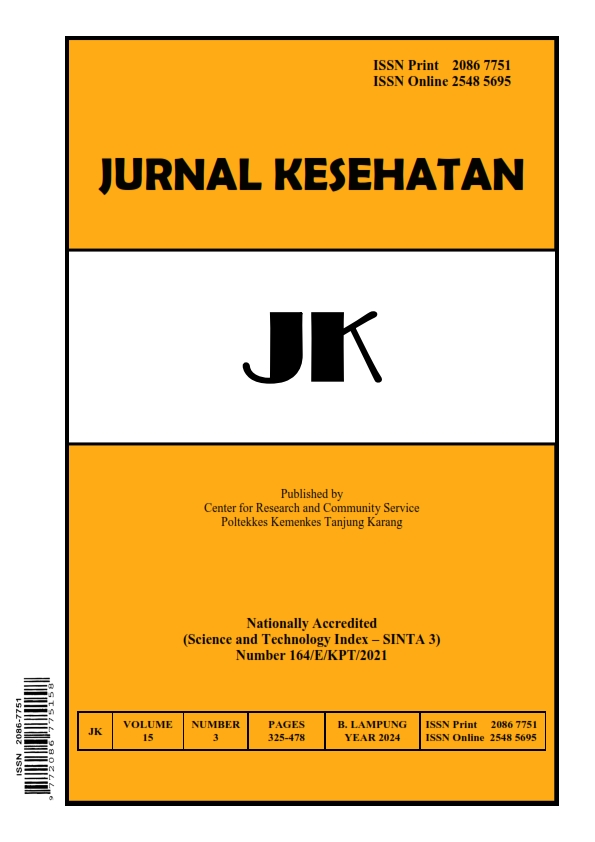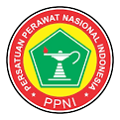Parenting Style and Stimulation of Psychosocial Development on the Psychosocial Development of Pre-School Children with Stunting
DOI:
https://doi.org/10.26630/jk.v15i3.4730Keywords:
Child health problem, Nutritional status , MalnutritionAbstract
Stunting is a condition of impaired growth in children under five caused by chronic malnutrition, particularly within the first 1,000 days of life, resulting in children being too short for their age. This issue is crucial because stunting also impacts children's motor skills and psychosocial development. The problem of malnutrition predominantly occurs in developing countries, where approximately 80% of stunted children are found in 24 countries across Asia and Africa. Indonesia has the highest prevalence, followed by India, China, Nigeria, and Pakistan. This study analyzes the influence of parenting styles and psychosocial stimulation on preschool-aged children experiencing stunting development. The research design uses an analytical observational method with a cross-sectional approach. The study sample consists of stunted children aged 3-6 years and their parents in Nganjuk Regency, totaling 150 respondents. Sampling was conducted purposively, and data were collected through the PSDQ questionnaire for parenting style, the EC HOME for psychosocial stimulation, and the KMME for psychosocial development. Multiple linear regression analysis was employed, with a significance level of (α=0.05). The analysis results indicate a significant effect of psychosocial stimulation on the psychosocial development of stunted children, with a p-value of 0.001≤α=0.05. Responsive parenting and active parent-child interaction are crucial in supporting children's development. Therefore, it is essential to improve children's nutritional status through proper caregiving approaches to ensure they grow with normal nutritional status and achieve optimal development in the future.
References
Alifatin, A. (2022). Modeling and Role-Modeling Theory on Stunting Children in the Perspective of Philosophy. Europe PMC Plus. https://doi.org/10.20944/preprints202206.0194.v1
Amelia, AP, Dian Ayuningrum, L., & Dwiarini, M. (2023). Relationship of psychosocial stimulation by mother to development of children aged 3-5 years in Gamping 1st Public Health Center Working Area. JNKI (Indonesian Journal of Nursing and Midwifery), 11(4), 430. https://doi.org/10.21927/jnki.2023.11(4).430-441
Azrimaidaliza, F. J., & Zulkarnain, A. (2021). The Association of Parenting and Stunting Status with Children Development Age 12-36 Months in the Work Area of Pauh Health Centre, Padang City. J Amerta Nutr, 5(4), 353-9.
Black, MM, Walker, SP, Fernald, LCH, Andersen, CT, DiGirolamo, AM, Lu, C., McCoy, DC, Fink, G., Shawar, YR, Shiffman, J., Devercelli, AE, Wodon, QT, Vargas-Barón, E., & Grantham-McGregor, S. (2017). Early childhood development coming of age: science through the life course. The Lancet, 389(10064), 77–90. https://doi.org/10.1016/S0140-6736(16)31389-7
Dhiu, K. D., & Fono, Y. M. (2022). Pola Asuh Orang tua terhadap perkembangan sosial emosional anak usia dini. EDUKIDS: Jurnal Inovasi Pendidikan Anak Usia Dini, 2(1), 56-61. https://www.jurnalp4i.com/index.php/edukids/article/view/1328
Fathadhika, S., & Pudjiati, S. R. R. (2023). Pengaruh stimulasi psiko-sosial terhadap perkembangan sosio-emosional pada anak stunting di Aceh Tengah. AcTion: Aceh Nutrition Journal, 8(1), 61-69. http://dx.doi.org/10.30867/action.v8i1.769
Jumilia, J., Cleodora, C., & Widyastuti, M. (2023). Analysis of the Impact of Stunt-ing on Psychosocial Development in Pre-School Children in the Working Ar-ea Seberang Padang Community Health Center. Jurnal Keperawatan Kompre-hensif (Comprehensive Nursing Jour-nal), 9(3). http://journal.stikep-ppni-jabar.ac.id/index.php/jkk/article/view/512
Maghfuroh, L., & Salimo, H. (2020). Panduan Deteksi Dini Tumbuh Kembang Anak Usia Prasekolah 3-6 Tahun. Banyumas: CV. Pena Persada.
Neherta, M., Banowo, AS, & Sari, IM (2023). The Key Role of Preventing Violence Against Children (1st ed.). Indramayu: Adanu Abimata.
Nurhayati, R., Indriani, D., & Utami, RB (2020). Postnatal Factors Associated With The Risk Of Stunting In Toddlers. STRADA Scientific Journal of Health, 9(2), 1121–1127. https://doi.org/10.30994/sjik.v9i2.453
Picauly, I., & Toy, SM (2013). Analysis of Determinants and Effects of Stunting on School Children's Learning Achievement in Kupang and East Sumba, Ntt. Journal of Nutrition and Food, 8(1), 55. https://doi.org/10.25182/jgp.2013.8.1.55-62
Primasari, Y., & Keliat, Budi Anna. (2020). Parenting practices as an effort to prevent the impact of stunting on children's psychosocial development. Journal of Nursing Science, 3(3), 263–272.
Putri, R. A., Ardian, J., & Isasih, W. D. (2023). Hubungan Pola Asuh Orang Tua dengan Kejadian Stunted pada Anak Balita. Nutriology: Jurnal Pangan, Gizi, Kesehatan, 4(2), 52-58. https://doi.org/10.30812/nutriology.v4i2.3298
Rahmawati, D., & Agustin, L. (2020). Cegah Stunting dengan Stimulasi Psikososial dan Keanekaragaman Pangan (edisi ke-1). Malang: AE Publishing.
Ruswiyani, E., & Irviana, I. (2024). The Role of Psychosocial Stimulation, Maternal Factors, and Child Care in Improving the Development of Stunting Children: A Literature Review. Journal of Parenting and Children, 1(2), 8. https://doi.org/10.47134/jpa.v1i2.313
Sutriyanti, NK (2020). Menabur Benih Dhar-ma dari Perspektif Multidisiplin (edisi ke-1). Takalar, South Sulawesi: Yayasan Ahmar Cendekia Indonesia
Yulianto, Y., Lestari, Y. A., & Suwito, E. D. (2017). Hubungan Pola Asuh Orang Tua Dengan Perkembangan Psikososial Anak Prasekolah Di Tk Pkk Xi Winong Kecamatan Gempol Kabupaten Pasuruan. Nurse and Health: Jurnal Keperawatan, 6(2), 21-29. https://doi.org/10.36720/nhjk.v6i2.18
Van De Kolk, I., Verjans-Janssen, S.R.B., Gubbels, J.S., Kremers, SPJ, & Gerards, SMPL (2019). A systematic review of interventions in the childcare setting with direct parental involvement: Effectiveness on child weight status and energy balance-related behavior. International Journal of Behavioral Nutrition and Physical Activity, 16(1), 1–28. https://doi.org/10.1186/s12966-019-0874-6
Downloads
Published
Issue
Section
License
Copyright (c) 2024 Risa Nurhayati, Sefrina Rukmawati, Rahayu Budi Utami, Deppi Nurmalita, Paradita Ayu Rahma

This work is licensed under a Creative Commons Attribution-ShareAlike 4.0 International License.
Authors who publish in this journal agree to the following terms:
- Authors retain copyright and grant the journal right of first publication with the work simultaneously licensed under a Creative Commons Attribution License (CC BY-SA 4.0) that allows others to share the work with an acknowledgment of the work's authorship and initial publication in this journal.
- Authors can enter into separate, additional contractual arrangements for the non-exclusive distribution of the journal's published version of the work (e.g., post it to an institutional repository or publish it in a book), with an acknowledgment of its initial publication in this journal.
- Authors are permitted and encouraged to post their work online (e.g., in institutional repositories or on their website) prior to and during the submission process, as this can lead to productive exchanges and earlier and greater citations of published work.












